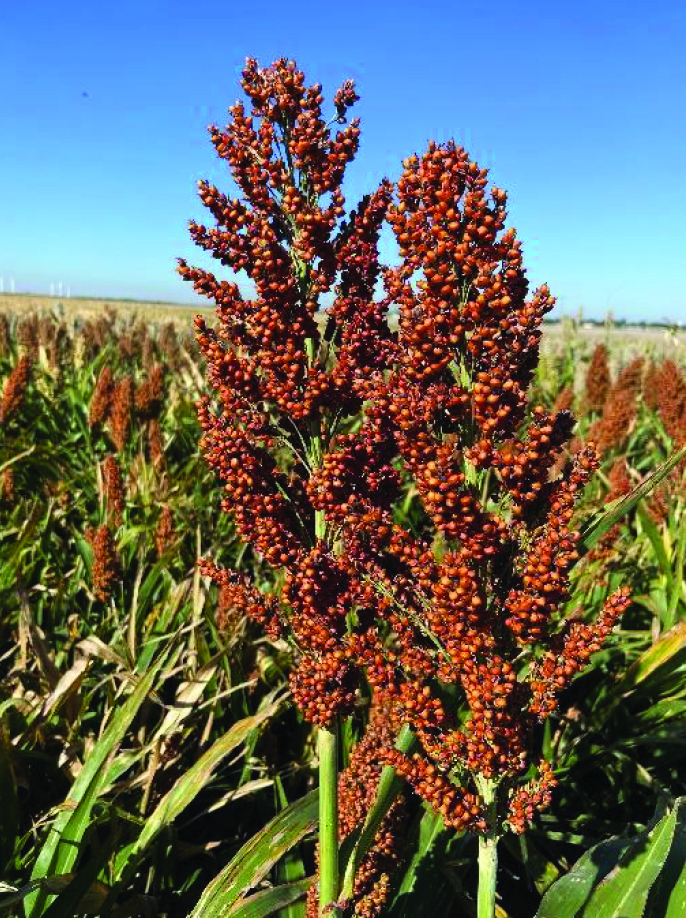Once a hybrid has completed flowering, the grain begins the process of adding dry matter. Initially, grain moisture is 80 to 90% and decreases as starch accumulates. Once the grain fully colors and reaches the hard dough stage, moisture content drops to 50 to 60%.

Over the next few days, under good growing conditions, starch accumulates rapidly while moisture continues to decrease, reaching physiological maturity in approximately 10 to 14 days. Hybrids may differ in grain moisture as they reach physiological maturity, which can be identified when a black layer or spot is visible at the base of the kernel. Grain moisture at this time may vary from 25 to 35% depending on the hybrid and environment.
How fast grain sorghum dries down after reaching black layer is a common question during the months of September and October. Researchers at Kansas State University conducted a trial examining sorghum grain filling and dry down dynamics of 20 hybrids in 2018 and 2019.
The average daily dry down was 0.76% of moisture per day with a range of 0.64 to 0.99% per day. The number of days from black layer to achieving a grain moisture content of 14% was 23 days with a range of 16 to 32 days, depending on the hybrid and year.
The rate of dry down in any given environment depends on a number of factors, but the most important are temperature, humidity and air circulation. Warmer temperatures expedite moisture evaporation from the grain, while high humidity levels will slow down the process.
In addition, air circulation from wind enhances drying efficiency. Architecture of the grain head may also play a role as a more compact panicle will dry slower than one more open.
Applying a harvest-aid to speed up grain drying is a common misconception. What harvest-aids do, such as glyphosate or sodium chlorate, is dry out the leaves and stalks facilitating timely and efficient harvesting.
Eliminating some of the green stover material that ends up with the thrashed grain may slightly lower the percent moisture being measured but has little impact on actual grain moisture.
Editor’s note: Brent Bean, Ph.D., is the Sorghum Checkoff Director of Agronomy, Lubbock, Texas. For more information visit www.sorghumcheckoff.com.


